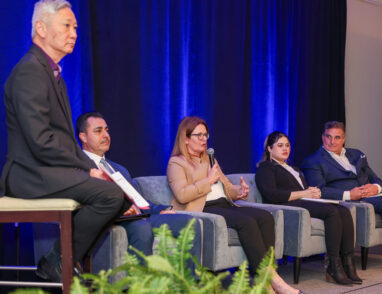Health Affairs Blog Post Response: A Positive PCMH Perspective
March 29, 2016 · Michael S. Barr, MD
Michael S. Barr, MD, MBA, MACP, NCQA’s Executive Vice President of our Quality Measurement and Research Group responds to a recent post on the Health Affairs Blog about the effectiveness of the Patient-Centered Medical Home (PCMH) approach to care. You may read the Health Affairs Blog post here. Dr. Barr, you could say, disagrees with the authors’ assessment and has a prescription for improving on the foundation the quality community has already built:
Health Affairs Response: A Positive PCMH Perspective
Berenson and Burton take a decidedly negative perspective on the tremendous amount of work going on around the United States to transform primary care practices into high-performing, well-organized, person-centered hubs of health care delivery. Lost in the critique are some facts about the NCQA recognition criteria and how they have evolved in response to the issues identified.
It is important to provide a bit of context. In March 2007, the Joint Principles of the Patient-Centered Medical Home were released by ACP, AAFP, AOA, and AAP. Large employers and insurance companies embraced the concept but asked for a process to identify practices demonstrating the attributes of the PCMH. This led to the first version of the NCQA PCMH Recognition program in 2008. Since then, NCQA has updated the standards in 2011 and 2014. There are currently over 56,000 clinicians (approximately 17% of primary care physicians) practicing in over 12,000 NCQA-recognized practice sites in the United States.
We are currently in the process of reviewing/updating the NCQA standards for release in March 2017 with an entirely redesigned process for practices interested in seeking or sustaining recognition [Detailed information here, here and here]. For each update, NCQA combs the literature, speaks to key stakeholders, invites public comments, analyzes data about practices that have achieved recognition, and convenes an advisory group representative of practices, employers, consumers, payers, and state/federal agencies.
Access to Care and Continuity
The 2014 NCQA PCMH standards address many of the issues identified by Berenson and Burton. With respect to first contact, PCMH Standard 1 focuses exclusively on access to care. Element 1 includes a critical factor requiring practices to provide same day appointments for routine and urgent care. A critical factor must be met in order for the practice to achieve any points for that element. Element 1 also sets the expectation for routine and urgent care appointments outside regular office hours and element 2 includes another critical factor requiring practices to provide timely clinical advice by phone. A related expectation is that the medical record is available for care and advice even if the office is closed.
Regarding continuity, PCMH Standard 2 includes expectations that people are assigned a personal clinician and that the practice monitors the percentage of visits with that clinician or team. There are robust expectations for communicating how the medical home coordinates care, provides after hours care, demonstrates equal access to all patients regardless of payment source – all of which support continuity. Further, Standard 2 specifically references the expectation that to be an effective medical home, the practice should have comprehensive patient information about visits to specialists and data from recent hospitalizations, specialty care and emergency department visits.
PCMH and Comprehensive Care
Comprehensiveness is clearly important but a significant challenge to measure as documented by O’Malley and Rich [O’Malley, A and Rich, E., 2015, Measuring Comprehensiveness of Primary Care: Challenges and Opportunities, Journal of General Internal Medicine, vol. 30]. We acknowledge that there is more work to do. NCQA invited Dr. O’Malley to join the NCQA PCMH 2017 advisory committee and that group is considering ways to improve how the program can assess comprehensiveness. Nevertheless, we should not ignore the major expectations for primary care practices included in the PCMH 2014 standards that contribute to comprehensiveness: comprehensive health assessments, care coordination, care management, population health, shared-decision making, use of clinical decision support, patient engagement, patient experience surveys, and continuous quality improvement.
PCMH Principles Effective, May Assist With Challenges Elsewhere
NCQA strives to achieve a balance between setting expectations yet not getting too prescriptive about how practices implement PCMH attributes. As a result, PCMH’s vary in their characteristics and their progress towards the ideal – something that is hard to account for in evaluating the model. The research to date suggests that given enough time to anchor new changes into the culture of a practice, and with ongoing financial and technical support, PCMHs do trend towards improving key aspects of quality, utilization and patient experience.
Berenson and Burton take particular aim at primary care but I am sure they would acknowledge that it will require more than the PCMH program to address the silos in health care. Even if all of primary care were to practice at the highest level of medical homeness, unless there is alignment along the same principles among specialists, hospitalists, work site and retail clinics, and everywhere else that people receive care, we will continue to look at the output of our health care delivery system and want better.








